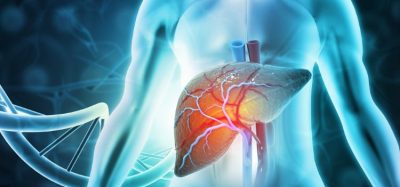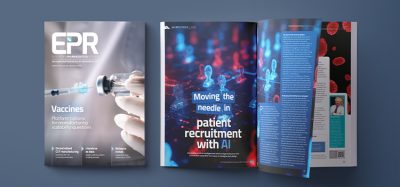A new vision of drug discovery and development
Posted: 18 December 2012 |
The pharmaceutical industry has experienced a decade of turbulence driven by the ‘patent cliff’ as major revenue generators are lost to generic status, coupled to the absence of a sustainable pipeline of drug candidates in development that have a good chance of being approved and launched. It is generally agreed that the lowest hanging drug discovery ‘fruit’ has been harvested and the industry is addressing diseases that are more complex. The current one target, one drug discovery and development paradigm continues to exhibit more than 90 per cent attrition mainly due to the lack of success in translating preclinical efficacy and safety data into successful human trials. It has also become clear that efficient drug discovery and development requires a deeper understanding of the complexity of human biology early in the process. The high attrition rates increase the costs and with the science indicating that precision therapeutics will replace the blockbuster model, the challenge of drug discovery and development is even greater. The traditional business model of pharmaceutical companies working in silos is no longer sustainable…


The pharmaceutical industry has experienced a decade of turbulence driven by the ‘patent cliff’ as major revenue generators are lost to generic status, coupled to the absence of a sustainable pipeline of drug candidates in development that have a good chance of being approved and launched1,2. It is generally agreed that the lowest hanging drug discovery ‘fruit’ has been harvested and the industry is addressing diseases that are more complex. The current one target, one drug discovery and development paradigm continues to exhibit more than 90 per cent attrition mainly due to the lack of success in translating preclinical efficacy and safety data into successful human trials1. It has also become clear that efficient drug discovery and development requires a deeper understanding of the complexity of human biology early in the process3. The high attrition rates increase the costs and with the science indicating that precision therapeutics will replace the blockbuster model4, the challenge of drug discovery and development is even greater. The traditional business model of pharmaceutical companies working in silos is no longer sustainable.
A new vision of strategic collaborations
However, there is a new vision where strategic collaborations between pharmaceutical companies, government agencies, venture capital-backed biotechnology companies and academic medical centres will create a new breadth of approaches that have a good chance of increasing the innovation that has been stagnant in recent years5-8. Government funding agencies are increasing the emphasis on translational research, even in a period of funding pressures.
Academic medical centres are also increasing their efforts in translational science, while continuing to create new technologies and basic knowledge. Life sciences and diagnostic companies have recognised the emergence of personalised or precision medicine and have begun commercialising the ‘omics’ platforms required for realising personalised (precision) medicine. There is also a heightened focus on coupling diagnostic / prognostic tests with new therapeutics to identify the patient sub-populations that will benefit from a treatment. This evolution of the pharmaceutical industry offers opportunities and challenges to the potential partners.
It is necessary to harness the expertise of the collaborating partners and to be innovative in focused efforts in order to gain the advantage of collaboration. All potential partners must be willing to negotiate terms of agreements that benefit all partners. In many cases, this will require modifications of institutional policies created in a very different era. In a new environment of collaboration, each potential partner must also identify and optimise the strengths of their organisation to make it a good complementary fit for potential partners. Academic medical centres are in a great position to take part in the collaborative business model of drug discovery and development, clinical trials and diagnostics, if they are willing to negotiate mutually beneficial terms, including ownership / licensing of intellectual property arising from the collaboration.
The importance of adopting the collaborative business model to increase the potential for innovation is reflected in the fact that the dominant paradigm in drug discovery for the last 25 years has been the target-centric model or the one gene, one target, one New Chemical Entity (NCE) approach. Most pharmaceutical companies embraced this philosophy due to the expectation of a nearterm impact of the human genome project, technological advances in screening automation, creation of large chemical libraries, increases in the number of solutions to protein structures and the creation of in silico software tools. A major challenge has been the slow and incomplete determination of the relationship between the disease genotype and the phenotype. It is now clear that putting most of the intellectual and experimental ‘eggs’ in this one basket has not produced the predicted productivity1.
A road to higher innovation
High Throughput Screening (HTS) had become the standard in target-centric discovery programs by the early 1990s, but in the late 1990s, High Content Screening (HCS) was introduced as an alternative or at least a complement to HTS9,10. The concept of HCS was to fully automate fluorescence microscopic analysis of cells and later small experimental organisms, allowing the creation of deeper biological knowledge based on the physiological disease relevance to better guide decisions on the progression of compounds. HCS offered the opportunity to initiate discovery based on a disease phenotype and not a specific molecular target. However, most discovery programs in the early days used HCS only in secondary assays and to follow a specific molecular target activity, since the speed of reading primary assays using HTS was viewed as paramount. However, given the late-stage failure of drug candidates, especially in phase II clinical trials1, the speed of reading a plate in discovery is insignificant compared to the time to make good decisions on progressing candidates based on the necessary biological and chemical knowledge11. Importantly, it has been demonstrated that phenotypic discovery was the most successful approach for first-in-class small molecule drugs approved by the US Food and Drug Administration (FDA) between 1999 and 200812,13.
Combining the application of multiplexed HCS to more disease relevant (and more complex) biological screening models such as mixed cell cultures, 3D human tissue engineered models of organs and small experimental organisms such as yeast, C. elegans, and zebrafish should have a major impact in the early discovery process14,15. Especially promising for the future is the potential of human induced pluripotent stem cells (iPSCs) from patients with a range of genomic backgrounds to serve as the source for disease relevant human tissue models to be used in discovery and early development16. Success here could have a major impact in optimising efficacy, as well as pharmacodynamics (PD) and pharmacokinetics (PK) and could minimise animal studies in pre-clinical trials after proper validation. It will also be critical to expand the use of computational chemistry and biology together with systems biology, in parallel with the improvement of the experimental systems used in phenotypic discovery17-19. Generation of complex data sets integrating the available ‘omics’ information requires computational methods to reduce the data to knowledge.
A critical role for quantitative systems pharmacology
Quantitative systems pharmacology (QSP) is an emerging field that integrates experimentation, including screening data, with computational tools to define the actions of drugs across multiple scales of biological complexity from molecules to cells, tissues, organs and organisms for a ‘systems’ level perspective20-22. QSP is the merger of pharmacology, especially pharmacokinetics (PK) and pharmacodynamics (PD) with the field of systems biology23. The promise of QSP also includes the ability to understand the interaction of drugs in individual patients.
We view QSP as involving Inputs, as well as the application of the elements of experimentation and computational methods of QSP and finally Outputs that result from the approach. The Input (diseaseassociated genotypes and phenotypes) of the QSP approach includes all of the available ‘omics’ generated on the disease model systems and patient samples including multiplexed fluorescence-based pathology. Disease relevant pathways are inferred from the ‘omics’ data to guide the development of the optimal phenotypic screen. The best possible phenotypic disease model is then validated as a High Content Screen (HCS) assay. The disease model/assay can range from multiplexed cells to engineered human tissue to experimental organisms. QSP integrates the data from the phenotypic discovery approach and applies a range of computational chemistry, computational biology and systems biology software tools to reduce the large screening/experimental data sets to functional knowledge, including polypharmacology24,25. Furthermore, a number of machine learning approaches have the potential to reduce the amount of screening measurements required26. Mathematical models of refined pathways, as well as PK and PD, are developed and then extended to define the complex processes of living systems23,27. The Output from this approach is expected to yield advanced functional knowledge on the pathways, including potential feedback loops between pathways, as well as physiological processes interrogated experimentally and computationally. Additionally, the output will identify any ‘emergent properties’ or properties of the system not predicted from investigating the components, such as heterogeneity of system responses22. Another important output should be improved and predictive drug efficacy and safety as a ‘knowledgebase’ of information as QSP is applied. The major output should be novel drugs, including drug combinations working on connected pathways28. There will be ‘feedback loops’ between input, QSP and output. For example, the QSP results will help build new hypotheses in regards to pathways and MOA that could feedback to input to perform new assays. Likewise, the outputs (e.g. drugs, combination therapies or polypharma cological strategies) would also be tested against HCS assays and newly collected omics data (e.g. from patients that have received treatment). QSP will also help to understand side effects, or mechanisms of drug resistance.
The University of Pittsburgh Drug Discovery Institute (UPDDI) as an example
The University of Pittsburgh Drug Discovery Institute (UPDDI) has embraced a two-fold strategy in creating an environment for the new vision of drug discovery and development (www.upddi.pitt.edu): Collaboration – through integrated activities across internal departments, centres and institutes, along with collaborations with other academic centres, government agencies and commercial partners; and Innovation – by developing and practicing new approaches and technologies to complement the present paradigm of discovery. Technologically, the UPDDI has key strengths in HCS and phenotypic discovery, chemistry / medicinal chemistry and molecular biophysics applied to target-centric discovery and is investing heavily in the implementation of QSP. The focus of this discussion is on QSP coupled to phenotypic discovery, but the power of molecular biophysics in target-centric programs is evident when applied to the right target and can be performed subsequent to an initial phenotypic discovery step when a target is identified29. The University of Pittsburgh has the depth and breadth to support a major effort in drug discovery and development and in cooperation with the University of Pittsburgh Medical Center (UPMC), the ability to translate basic research to clinical trials and clinical practice. Ready access to clinician scientists, patients and patient samples is crucial to the success of this new paradigm.
A major advance in computational chemistry and computational biology in recent years has been the harnessing of genomics and proteomics databases and sophisticated algorithms to infer pathways responsible for cell functions as a starting point for defining the actual pathways. It is also now possible to harness drug and target protein databases to predict drug interactions with specific target proteins. Positive ‘hits’ from the in silico profiling can be used to identify useful ‘chemical probes’ of pathways and cellular functions, as well as a starting point to design a phenotypic screening strategy for drug discovery and/or as a reference point for pursuing a molecular biophysics / target-centric approach to drug discovery30,31.
Critical role of HCS in QSP
The UPDDI is applying QSP in the drug discovery and development process starting with the application of phenotypic screening using HCS11,14,15. In phenotypic drug discovery, the detailed, basic and clinical science is a critical component, as in target-centric discovery. However, a functional, disease relevant phenotype is selected, validated and profiled by HCS rather than selecting and validating a single molecular target. This broadens the potential molecular targets that can be modulated by compounds and puts the initial focus on functions and pathways. This is very different from applying hypothesis driven research to follow a single molecular target, but allows an unbiased, physiological profile to define the cellular functions and pathways directly involved in the disease. Optimally, one or more biomarkers can be identified in the process, quantified in the HCS assay and carried through the whole discovery-development process. A critical step is the selection of compound libraries based on both diversity and novelty. In addition, exploring existing drugs for repurposing and natural products for added diversity has great promise. The screening campaign is performed identifying ‘hits’ and lead generation and lead optimisation is subse – quently performed. An optimally designed HCS assay can be used to guide the structure activity relationship (SAR) in lead optimisation15,32,33. In fact, the FDA does not require molecular target identification for approval13. Extensive data mining on 890 approved drugs demon – strated that on average, each of the analysed drugs interact with six known molecular targets34. This latter fact gives promise to the drug repurposing efforts now underway35.
However, when optimised leads are identified, it is important to apply chemical proteomics approaches to try to identify potential molecular target(s)36,37. Identification of molecular target(s) allows the application of mechanism of action (MOA) studies that might involve multiple molecular targets across multiple pathways. Furthermore, one or a combination of identified molecular targets could be useful as biomarkers. In vitro early safety assessment can also be performed using HCS at this stage to help guide the prioritisation of leads38,39. The pre-clinical and clinical stages are the same functionally, as with the targetcentric approach, but with the addition of computational and systems biology that permits quantification and modelling of the data. The phenotypic drug discoverydevelopment approach allows the application of QSP from early discovery on a range of scales of biological complexity from molecules to mammalian models to human patient cohorts. The phenotypic approach can be extended from early discovery through preclinical and clinical trials and represents a natural path to the development and use of biomarkers using multiscale imaging modalities40.
Conclusion
A new vision of drug discovery and development is based on collaborations between pharmaceutical companies, government agencies, venture-backed biotechnology companies and academic medical centres to expand the potential for innovation, while sharing the complexity and technologies involved in discovering and developing novel therapeutics. Quantitative systems pharmacology coupled with high content screening is being developed as one innovative path at the University of Pittsburgh Drug Discovery Institute. Personalised / precision medicine is dependent of the development of diagnostic tests to guide the optimal delivery of therapeutics to patient sub-populations.
Acknowledgements
I would like to thank my colleagues for valuable discussions on how to harness the new vision of drug discovery and development including Mark Schurdak, Bert Gough, Andy Stern, Andreas Vogt, Dutch Boltz, Ivet Bahar, Jeremy Berg, Ahmet Bakan, Tim Lezon and Bob Murphy.
References
- Paul S, Mytelka D, Dunwiddie C, Persinger C, Munos B, Lindborg S, Schacht A. How to improve R&D productivity: the pharmaceutical industry’s grand challenge. Nature Reviews Drug Discovery. 2010;9:203-14
- Munos B. Lessons from 60 years of pharmaceutical innovation. Nature Reviews Drug discovery. 2009;8(12):959-68
- Butcher E. Can cell systems biology rescue drug discovery? Nature Reviews Drug Discovery 2005;4:461-7
- Eichler HG, Abadie E, Breckenridge A, Flamion B, Gustafsson LL, Leufkens H, et al. Bridging the efficacyeffectiveness gap: a regulator’s perspective on addressing variability of drug response. Nature Reviews Drug Discovery. 2011;10(7):495-506
- Vallance P, Williams P, Dollery C. The future is much closer collaboration between the pharmaceutical industry and academic medical centers. Clin Pharmacol Ther. 2010;87(5):525-7
- Frye S, Crosby M, Edwards T, Juliano R. US academic drug discovery. Nature Reviews Drug Discovery. 2011;10(6):409-10
- Kaitin KI. Deconstructing the drug development process: the new face of innovation. Clin Pharmacol Ther. 2010;87(3):356-61. PMCID: 2953249
- Edmondson G, Valigra L, Kenward M, Hudson R, Belfield H. Making industry-university partnerships work: Science/Business Innovation Board, AISBL; 2012 Contract No.: Document Number
- Taylor DL. A personal perspective on high-content screening (HCS): from the beginning. J Biomol Screen. 2010;15(7):720-5
- Taylor D. Past, Present, and Future of High Content Screening and the Field of Cellomics. In: Taylor D, Haskins J, Giuliano K, editor. Methods in Molecular Biology, 2007; 356: 3-18. High Content Screening: A Powerful Approach to Systems Cell Biology and Drug Discovery. Totowa, NJ: Humana Press
- Alcock P, Bath C, Blackett C, Simpson P. High content cell based primary screening for oncology targets–a perspective. European Pharmaceutical Review. 2010;3
- Swinney D, Anthony J. How were new medicines discovered? Nature Reviews Drug Discovery. 2011;10
- Lee J, Uhlik M, Moxham C, Tomandl D, Sall D. Modern phenotypic drug discovery is a viable, neoclassic pharma strategy. Journal of Medicinal Chemistry. 2012;55:4527-38.
- Gough A, Taylor D, et al. High Content Screening. The Molecular Basis of Cancer: Elsevier; In Press
- Zanella F, Lorens JB, Link W. High content screening: seeing is believing. Trends Biotechnol. 2010;28(5): 237-45
- Grskovic M, Javaherian A, Strulovici B, Daley GQ. Induced pluripotent stem cells–opportunities for disease modelling and drug discovery. Nature Reviews Drug Discovery. 2011;10(12):915-29
- Perlman ZE, Slack MD, Feng Y, Mitchison TJ, Wu LF, Altschuler SJ. Multidimensional drug profiling by automated microscopy. Science. 2004;306(5699):1194-8
- Giuliano KA, Chen YT, Taylor DL. High-content screening with siRNA optimizes a cell biological approach to drug discovery: defining the role of P53 activation in the cellular response to anticancer drugs. J Biomol Screen. 2004;9(7):557-68
- Loo LH, Lin HJ, Steininger RJ, 3rd, Wang Y, Wu LF, Altschuler SJ. An approach for extensibly profiling the molecular states of cellular subpopulations. Nat Methods. 2009;6(10):759-65. PMCID: 2818727
- Yang R, Niepel M, Mitchison TK, Sorger PK. Dissecting variability in responses to cancer chemotherapy through systems pharmacology. Clin Pharmacol Ther. 2010;88(1):34-8. PMCID: 2941986
- Zhao S, Iyengar R. Systems pharmacology: network analysis to identify multiscale mechanisms of drug action. Annu Rev Pharmacol Toxicol. 2012;52:505-21
- Sorger P, Allerheiligen S. Quantitative and systems pharmacology in the post-genomic era: new approaches to discovering drugs and understanding therapeutic mechanisms. National Institutes of Health White Paper. 2011
- van der Graaf PH, Benson N. Systems pharmacology: bridging systems biology and pharmacokineticspharmacodynamics (PKPD) in drug discovery and development. Pharm Res. 2011;28(7):1460-4
- Pujol A, Mosca R, Farres J, Aloy P. Unveiling the role of network and systems biology in drug discovery. Trends Pharmacol Sci. 2010;31(3):115-23
- Hopkins AL. Network pharmacology: the next paradigm in drug discovery. Nat Chem Biol. 2008;4(11):682-90
- Murphy RF. An active role for machine learning in drug development. Nat Chem Biol. 2011;7(6):327-30
- Faeden J, Blinov M, Hlavacek W. Rule-based modeling of biochemical systems with BioNetGen. In: Maly I, editor. Methods in Molecular Biology: Systems Biology. Totowa, NJ: Humana Press; 2009
- Bernards R. A missing link in genotype-directed cancer therapy. Cell. 2012;151(3):465-8.
- Molina G, Vogt A, Bakan A, Dai W, Queiroz de Oliveira P, Znosko W, et al. Zebrafish chemical screening reveals an inhibitor of Dusp6 that expands cardiac cell lineages. Nat Chem Biol. 2009;5(9):680-7. PMCID: 2771339
- Liu Z, Fang H, Reagan K, Xu X, Mendrick DL, Slikker W, Jr., et al. In silico drug repositioning – what we need to know. Drug Discov Today. 2012;00(00):13-6
- Keiser MJ, Setola V, Irwin JJ, Laggner C, Abbas AI, Hufeisen SJ, et al. Predicting new molecular targets for known drugs. Nature. 2009;462(7270):175-81. PMCID: 2784146
- Link W, Oyarzabal J, Serelde BG, Albarran MI, Rabal O, Cebria A, et al. Chemical interrogation of FOXO3a nuclear translocation identifies potent and selective inhibitors of phosphoinositide 3-kinases. J Biol Chem. 2009;284(41):28392-400. PMCID: 2788888
- Zanella F, Rosado A, Garcia B, Carnero A, Link W. Chemical genetic analysis of FOXO nuclearcytoplasmic shuttling by using image-based cell screening. Chembiochem. 2008;9(14):2229-37
- Mestres J, Gregori-Puigjane E, Valverde S, Sole RV. The topology of drug-target interaction networks: implicit dependence on drug properties and target families. Mol Biosyst. 2009;5(9):1051-7
- Mullard A. Drug repurposing programmes get lift off. Nature Reviews Drug Discovery. 2012;11(7):505-6
- Cong F, Cheung AK, Huang SM. Chemical geneticsbased target identification in drug discovery. Annu Rev Pharmacol Toxicol. 2012;52:57-78
- Laggner C, Kokel D, Setola V, Tolia A, Lin H, Irwin JJ, et al. Chemical informatics and target identification in a zebrafish phenotypic screen. Nat Chem Biol. 2012;8(2):144-6. PMCID: 3262069
- Vernetti L, Irwin W, Giuliano K, Gough A, Johnston K, Taylor D. Cellular Systems Biology Applied to Pre- Clinical Safety Testing: A Case Study of CellCiphr™ Cytotoxicity Profiling. In: Xu J, Ekins S, editor. Drug Efficacy, Safety, and Biologics Discovery: Emerging Technologies and Tools. New Jersey: John Wiley and Sons; 2008. p. 53-73
- Giuliano K, Gough A, Taylor D, Vernetti L, Johnston K. Early Safety Assessment Using Cellular Systems Biology Yields Insights into Mechanisms of Action. J Biomol Screen. 2010;15:783-97
- Prescher JA, Contag CH. Guided by the light: visualizing biomolecular processes in living animals with bioluminescence. Curr Opin Chem Biol. 2010;14(1):80-9
About the author
Dr. D. Lansing Taylor began his academic career at Harvard University developing and applying novel fluorescence-based reagents and imaging technologies to investigate fundamental cellular processes. He then moved to Carnegie Mellon University and became the Director of the National Science Foundation, Center for Light Microscope Imaging and Biotechnology, and in 1995 was named Vice Dean of CMU’s Division of Molecular Sciences. Together with his students, post-docs and collaborators, Dr. Taylor developed reagent and imaging technologies including fluorescent analog cytochemistry, ratio imaging, fluorescence anisotropy imaging microscopy, the multimode light microscope and standing wave fluorescence microscopy. Dr. Taylor co-founded and led a series of biotechnology companies including Biological Detection Systems (cyanine dyes with Alan Waggoner), Cellomics (High Content Screening), Cellumen (predictive early safety assessment) and Cernostics (tissue systems pathology). Dr. Taylor is a co-inventor on more than 25 US patents, including six focused on cell-based imaging. He was the recipient of an NIH MERIT award and a Pioneer Award from the NSF. Dr. Taylor returned to academia at the end of 2010 to continue his academic interests which now link largescale cell, tissue and experimental organism profiling with computational and systems biology to optimise drug discovery and development. As the Director of the Drug Discovery Institute, he is focusing on the application of Quantitative Systems Pharmacology in order to change the paradigm in drug discovery and development.









